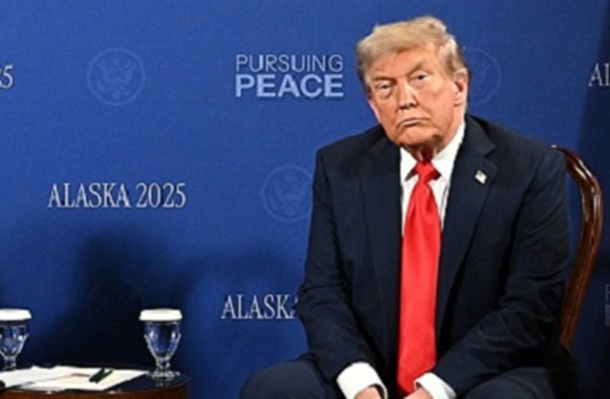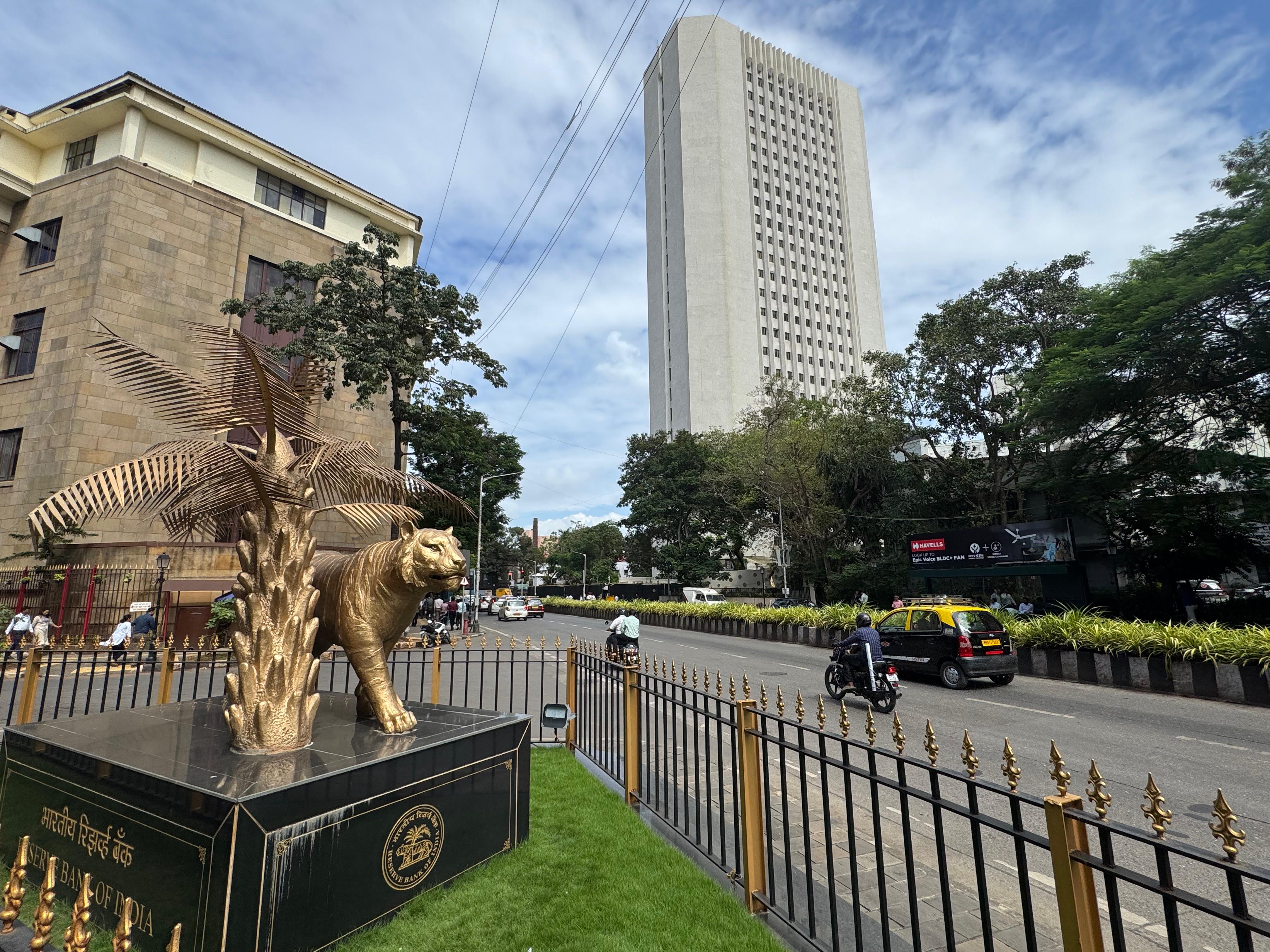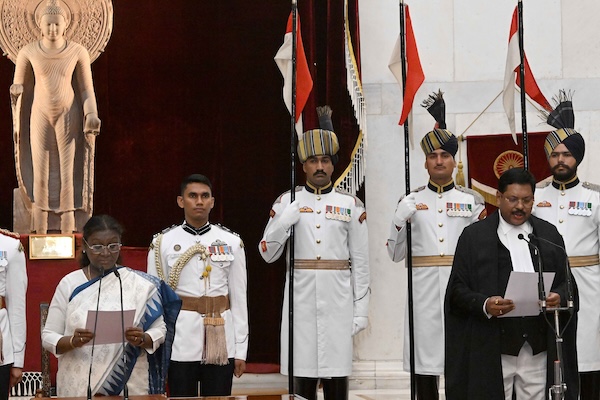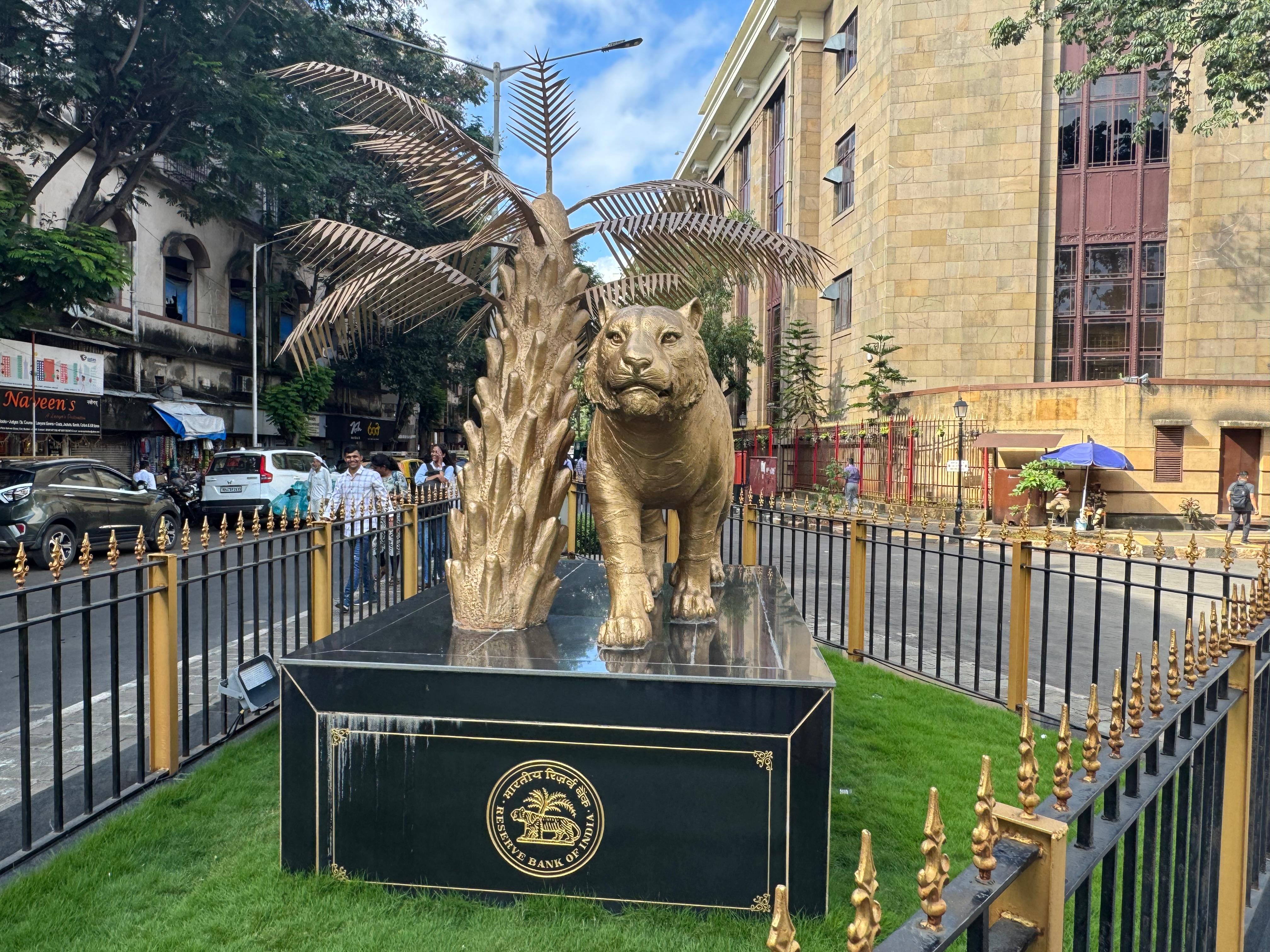.png)
Surviving the Three-Body Problem of Modern Economics and Identity
As geopolitics, tech, and human nature pull in opposite directions, India’s economy tries to find balance in its own Three-Body Problem.

By Phynix
Phynix is a seasoned journalist who revels in playful, unconventional narration, blending quirky storytelling with measured, precise editing. Her work embodies a dual mastery of creative flair and steadfast rigor.
October 12, 2025 at 11:50 AM IST
Dear Insighter,
Have you read The Three-Body Problem? Or tried watching the Netflix version before giving up halfway? It’s one of those stories that makes you feel tiny and terrified and oddly hopeful all at once. The Trisolarans live under three suns, never sure if tomorrow means fire or frost. Whole civilisations blinked in and out of existence because physics can’t make up its mind. When three forces pull on one another, prediction is futile; stability, an illusion.
These days it feels like we’re spinning between our own three suns: geopolitics, tech, and plain old human nature. Each pulling in a different direction. The harder we try to predict what’s next, the faster everything goes off script. The Trisolarans sent microscopic quantum spies, a.k.a. sophons, to freeze human progress. We’ve built our own digital sophons: misinformation loops, algorithmic bubbles, and deepfakes that warp truth itself.
Our global economy is wobbling under the pull of its own three suns. The first—geopolitics—is blazing. As Saibal Dasgupta notes, Donald Trump’s public pursuit of a Nobel Peace Prize and its quiet denial in favour of Venezuelan opposition leader María Corina Machado, exposes how Europe is learning to move in its own orbit, away from American gravity. Meanwhile, India and Qatar are realigning theirs. After Israel’s September airstrike in Doha, Ajay Srivastava writes, Qatar began hedging its bets, diversifying partnerships beyond the West. For India, that means stronger energy and security ties, because in a multipolar world, the only safe orbit is one you chart yourself.
Then there’s technology, which glows both brilliant and blinding. Finance Minister Nirmala Sitharaman’s call to prepare for stablecoin integration, as R. Gurumurthy observes, signals a tectonic shift. Stablecoins have grown from crypto curiosities into financial weapons, capable of reshaping global payment rails. The question isn’t if India will engage, but whether it can do so on its own terms. It’s a sovereignty test disguised as innovation. Much like Earth’s scientists creating a system of mutually assured destruction in The Dark Forest, India must build systems the world hasn’t already hacked.
The Reserve Bank of India, as K. Srinivasa Rao explains, has loosened some of its regulatory strings, offering banks more operational freedom to lend. But freedom without risk discipline is just entropy in a blazer. Banks must now rebuild their credit engines with data, analytics, and internal checks sturdy enough to withstand policy shifts.
And while the state loosens one leash, it tightens another. The Tata group’s internal friction, where trustees allegedly overstepped their mandate and formed a “super board”, invited the rarest intervention: a reported nudge from Home Minister Amit Shah and Finance Minister Sitharaman. As Sohini Ghosh and Srinath Sridharan note, it’s a defining moment for Indian capitalism. Should the state mediate private governance in the name of stability?
Minari Shah adds that Tata Trusts’ silence has only amplified unease. With the Group’s famed moral halo at stake, the crisis exposes fundamental questions of ownership and governance: who truly wields power in a Group long defined by selfless trusteeship? The very model that distinguished Tata may now threaten its stability.
In another Tata Group saga, Krishnadevan V points out Tata Capital’s IPO wasn’t born from ambition but regulatory compulsion. The RBI wanted it public, and the markets obeyed. Institutions snapped up shares worth ₹46 billion while retail investors mostly sat it out.
Our third sun—the human one—burns deepest. It’s not just our policies or markets being pulled apart; it’s our sense of self. Shruti Mahajan writes about the deepfake lawsuits filed by Aishwarya and Abhishek Bachchan, both trying to reclaim their own faces from the internet’s hall of mirrors. When your likeness can flirt, sell, or sing without you, what part of you is still yours? Autonomy used to mean control over your choices. Now it’s about control over your pixels.
Markets, too, are reprogramming perception. As Krishnadevan V describes, Indian investors are now paying what he calls a “stain premium”—rewarding companies not despite their flaws but because of the stories that redeem them. Every negative is spun into a positive. Tariffs become patriotic; slowing consumption gets rebranded as “premiumisation”; AI disruption is painted as productivity.
Even government spending plays optical tricks. Madhavi Arora’s analysis reveals that the apparent surge in public capex is more illusion than transformation, much of it a low-base bounce, not new investment. We’ve grown comfortable mistaking activity for progress, motion for momentum. The planet looks stable until you trace its orbit.
But there are signs of resilience. LG Electronics India, Krishnadevan V finds, earns nearly 38% of its profits from after-sales services, a mere 2.7% of revenue. Hidden profit in plain sight, proof that endurance often hides in the mundane. Similarly, Babuji K’s numbers show Small Finance Banks now holding 1.18% of India’s banking assets, up from 0.44% in 2018.
On another stage, Mint Owl cautions that the Global Fintech Fest risks turning into corporate theatre. The show grows glossier, but the substance dims. And on the policy front, G. Chandrashekhar argues for modernising entire ecosystems, not just missions. His case for pulses self-sufficiency is really a parable for all sectors: true growth requires structure, not slogans.
Meanwhile, another of Chandrashekhar’s pieces cuts deeper as he questions why certified sustainable palm oil deserves tax concessions at all. Virtue can’t be bought through tariffs.
And then there’s TK Arun’s chilling reminder of what happens when systems fail altogether. Contaminated cough syrup, exported from India, killed children in the Gambia and Uzbekistan. “Death syrup,” he calls it. Bureaucratic entropy masquerading as progress. His prescription: blockchain tracing for pharma ingredients.
Even Bihar’s elections aren’t immune to chaos. Amitabh Tiwari describes a contest between two definitions of “MY”: Mahila/Yuva versus Muslim/Yadav. Women, youth, caste—each pulling the political orbit in a different direction. No stable solution, only dynamic equilibrium.
And as if markets weren’t volatile enough, GIFT City has allowed daily expiry Nifty options, which are effectively zero-day contracts. As Krishnadevan V warns, it’s temporal chaos: the faster the tick, the shorter the fuse. It’s day-trading in a strobe light.
Returning to Liu’s message: intelligence isn’t a triumph over chaos; it’s just another survival mechanism against entropy. The Trisolarans looked at the stars and saw escape. We look at our markets, policies, and faces and see versions of ourselves constantly edited, destabilised, but still trying. Maybe that’s the miracle. It’s not that we find stability, but that we keep orbiting in spite of instability.
As Kirti Tarang Pande notes, even central bankers betray the strain: eyes blinking a shade too often, lips pressed a second too long. Humans trying to hold composure while three suns tug at their calm.
Maybe that’s the real lesson: chaos isn’t the villain. Denial is. The world was never meant to balance perfectly; it was meant to keep moving. So we build policies and platforms hoping they can take a few hits without falling apart. Liu never promises fairness in the series. Just motion. And maybe that’s enough… for now.
Until next time, keep your feet on the ground. The stars can wait.
Also Read:
· The Paradox of Prediction: Why We Can't Stop Forecasting What We Can't Know by Babuji K: Preparing for multiple scenarios is our only defense against the inherent uncertainty of forecasting.
· When AI Meets Culture: The Real Test of India’s Health Revolution by Hemachandra Padhan: Technology's ultimate success hinges on its integration with the complex realities of culture and access.
· Akshay Kumar, Parenting, and the Lie We Tell Ourselves by Kirti Tarang Pande: True safety for our children begins with trust and connection, not the illusion of control.
· Japan’s First Woman PM Faces Big Tests, And India Has a Stake in the Outcome by Saibal Dasgupta: Japan's new leadership and its stance on China could significantly reshape Asia's strategic landscape.
· As Growth Decouples From Employment, the Fed Faces a Trilemma by Mohamed A. El-Erian: The US central bank navigates the impossible trinity of inflation control, maximum employment, and financial stability.
· ORF Chairman Joshi on How to Win in a Predatory, Bipolar World by Kirti Tarang Pande: Smaller nations must build smart alliances and rewrite the rules to survive in an aggressive geopolitical climate.
· The EU Must Stand Up to Trump by Joseph E. Stiglitz: It makes no sense for a bloc as large as the EU to fold to the whims of a reckless US president.
· PoJK On The Boil: Why India Must Replace Populism With Strategy by Lt Gen Syed Ata Hasnain: Chronic misgovernance in Pakistan-occupied Jammu & Kashmir is creating conditions for prolonged instability.
· The Case for IMF Gold Sales by Tim Hirschel-Burns: Selling a fraction of the IMF's massive gold reserves could generate billions to offset critical foreign-aid cuts.



